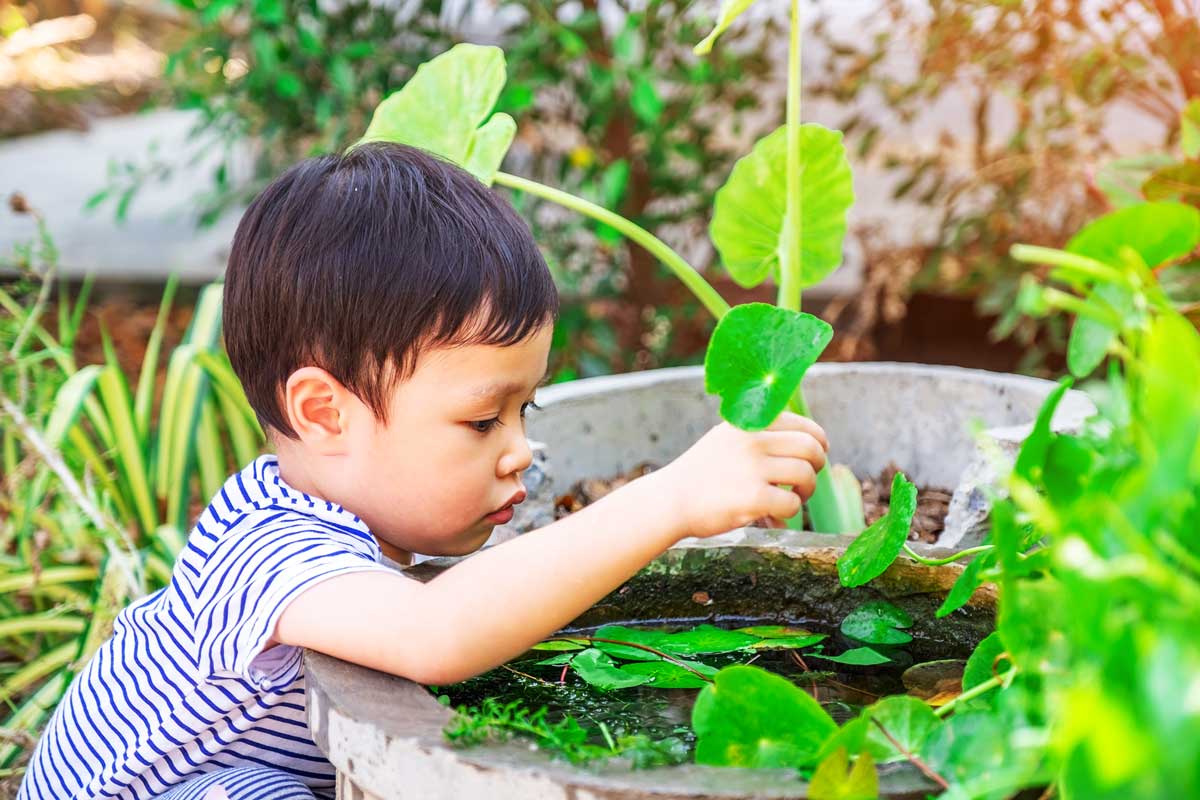Classroom Pet
In this lesson, the children will make a list of possible pets and discuss responsibilities for a classroom pet.
Content Area:
Growth and Change
Learning Goals:
This lesson will help toddlers and preschoolers meet the following educational standards:
- Understand that living things grow and change
- Understand that living things rely on the environment and/or others to live and grow
Learning Targets:
After this lesson, toddlers and preschoolers should be more proficient at:
- Observing, investigating, describing and categorizing living things
- Showing an awareness of changes that occur in oneself and the environment
- Describing and comparing the basic needs of living things
- Showing respect for living things

Classroom Pet
Lesson plan for toddlers/preschoolers
Step 1: Gather materials.
- Paper
- Markers
- Pet (based on decision)
- Pet supplies (based on decision)
Note: Small parts pose a choking hazard and are not appropriate for children age five or under. Be sure to choose lesson materials that meet safety requirements.
Step 2: Introduce activity.
- During a large-group time, engage the children in a discussion about what they know about pets.
- Ask the children if they would like to get a pet for the classroom (or get another pet if the classroom already has a pet).
- Invite the children to share what they know about how to take care of a pet and what a pet would need to live in the classroom.
- Create a list of possible pets that would be appropriate for the classroom.
- Discuss the habitat that each of the possible pets would need to live in the classroom (such as a bowl or aquarium for a fish, a cage for a mouse, etc.).
Step 3: Engage children in lesson activities.
- Assemble the children in small groups and invite them to vote for the pet that they would like to have in the classroom.
- Invite the children to document their votes by writing their names on a piece of chart paper with columns for each pet option.
- Based on each child’s vote, invite the children to share what they would need to do to care for each pet. For example, if the children selected a fish, what would they need to do to care for the fish, such as feeding, changing the water and cleaning the fishbowl/aquarium.
- On a piece of chart paper for each pet, write down the responsibilities that children would share.
- Invite the children to compare the different responsibilities for the different pets.
- Later in the day, or the following day, invite the children to count all of the votes and decide which pet received the most votes.
- Create a shopping list for supplies and materials that will be needed for the pet.
- If possible, take a field trip to a pet store to purchase these items.
Step 4: Vocabulary.
- Habitat: Where animals live
- Compare: To identify the similarities or differences between two objects
Step 5: Adapt lesson for toddlers or preschoolers.
Adapt Lesson for Toddlers
Toddlers may:
- Not have the expressive vocabulary to participate in conversations about how to take care of pets
- Have an emergent understanding of what pets are
Child care providers may:
- Encourage the children to think about what they need during the day (food, clean clothes, etc.) to compare their needs to the needs of a pet
- Create a list of potential pets ahead of time
Adapt Lesson for Preschoolers
Preschoolers may:
- Be interested in going to a pet store before voting to ask a pet store worker about different animals
- Make connections to pets they have at home and how they care for their pets
Child care providers may:
- Visit a pet store as a class to gather information or invite a pet expert to the classroom to share their knowledge of pets
- Invite the children to bring in photos of their pets at home
Suggested Books
- Not Norman: A Goldfish Story by Kelly Bennett
- Caring for Your Pets by Ann Owen
- What Pet Should I Get by Dr. Suess
- Some Pets by Angela Diterlizzi
Music and Movement
- Old McDonald Had a Farm (include common pets instead of farm animals)
- Play Simon Says with animal movements
- Animals in Action Movement Song
Outdoor Connections
- Play I Spy outdoors during neighborhood walks or visits to the park and try to spot animals that can be seen
Web Resources
- Explore pet store websites to look at potential pets and create shopping lists
Comment on this lesson